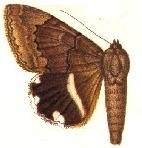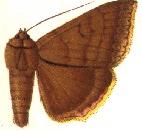
Lesotho, officially the Kingdom of Lesotho, is an enclaved country surrounded entirely by South Africa. Lesotho is just over 30,000 km2 (11,583 sq mi) and has a population of about 2 million. Its capital and largest city is Maseru. The official languages are Sesotho and English.

The economy of Lesotho is based on agriculture, livestock, manufacturing, mining, and depends heavily on inflows of workers’ remittances and receipts from the Southern African Customs Union (SACU). Lesotho is geographically surrounded by South Africa and is economically integrated with it as well. The majority of households subsist on farming. The formal sector employment consist of mainly the female workers in the apparel sector, the male migrant labor, primarily miners in South Africa for 3 to 9 months and employment in the Government of Lesotho (GOL). The western lowlands form the main agricultural zone. Almost 50% of the population earn income through informal crop cultivation or animal husbandry with nearly two-thirds of the country's income coming from the agricultural sector. About 70% of the population lives in rural areas and works in agriculture.

Maseru is the capital and largest city of Lesotho. It is also the capital of the Maseru District. Located on the Caledon River, Maseru lies directly on the Lesotho–South Africa border. Maseru had a population of 330,760 in the 2016 census. The city was established as a police camp and assigned as the capital after the country became a British protectorate in 1869. When the country achieved independence in 1966, Maseru retained its status as capital. The name of the city is a Sesotho word meaning "red sandstones".

The wildlife of Lesotho is composed of its flora and fauna. Lesotho has 60 species of mammals and 339 species of birds.

Achaea catella, the banded achaea, is a moth of the family Erebidae. The species was first described by Achille Guenée in 1852. It is found in Africa, including Senegal, South Africa, Réunion and Namibia.

Achaea sordida is a species of moth of the family Erebidae first described by Francis Walker in 1865. It is found in Africa, including South Africa and Eswatini.

Acrapex carnea is a species of moth of the family Noctuidae first described by George Hampson in 1905. It is found in Africa, including South Africa.

Heliothis scutuligera is a species of moth of the family Noctuidae first described by Achille Guenée in 1852. It is found in the Western, Eastern and Northern Cape of South Africa, Lesotho KwaZulu-Natal, Transvaal, Botswana, Zimbabwe and Malawi.

Heliothis xanthiata is a species of moth of the family Noctuidae first described by Francis Walker in 1865. It is found in Africa, including and possibly limited to South Africa and Lesotho.
Heliothis galatheae is a species of moth of the family Noctuidae first described by Hans Daniel Johan Wallengren in 1856. It is found all over Africa, including South Africa to Ethiopia and the Gambia.
Acontia gratiosa is a moth of the family Noctuidae first described by Hans Daniel Johan Wallengren in 1856.
Acrapex lepta is a moth of the family Noctuidae first described by Martin Krüger in 2005. It is endemic to Lesotho.
Acrapex leptepilepta is a moth of the family Noctuidae first described by Martin Krüger in 2005. It is endemic to Lesotho.

Adisura aerugo, the verdant adisura, is a moth of the family Noctuidae. The species was first described by Felder and Rogenhofer in 1874. It is found in the Cape Province, Lesotho, KwaZulu-Natal, Transvaal, Zimbabwe and Botswana.
Agrotis caffer is a moth of the family Noctuidae first described by George Hampson in 1903. It is endemic to Lesotho and South Africa.

Agrotis longidentifera, the brown cutworm, is a moth of the family Noctuidae described by George Hampson in 1903. It is found in eastern and southern Africa and several islands in the Indian Ocean.
Agrotis plumiger is a moth of the family Noctuidae first described by Martin Krüger in 2005. It is endemic to Lesotho.
Heliothis disticta is a species of moth of the family Noctuidae first described by George Hampson in 1902. It is found in Lesotho, Transvaal and Zimbabwe.

Lesotho–Russia relations are the bilateral relations between Russia and Lesotho.
The COVID-19 pandemic in Lesotho is part of the ongoing worldwide pandemic of coronavirus disease 2019 caused by severe acute respiratory syndrome coronavirus 2. The virus was confirmed to have reached Lesotho on 13 May 2020.
This page is based on this
Wikipedia article Text is available under the
CC BY-SA 4.0 license; additional terms may apply.
Images, videos and audio are available under their respective licenses.





